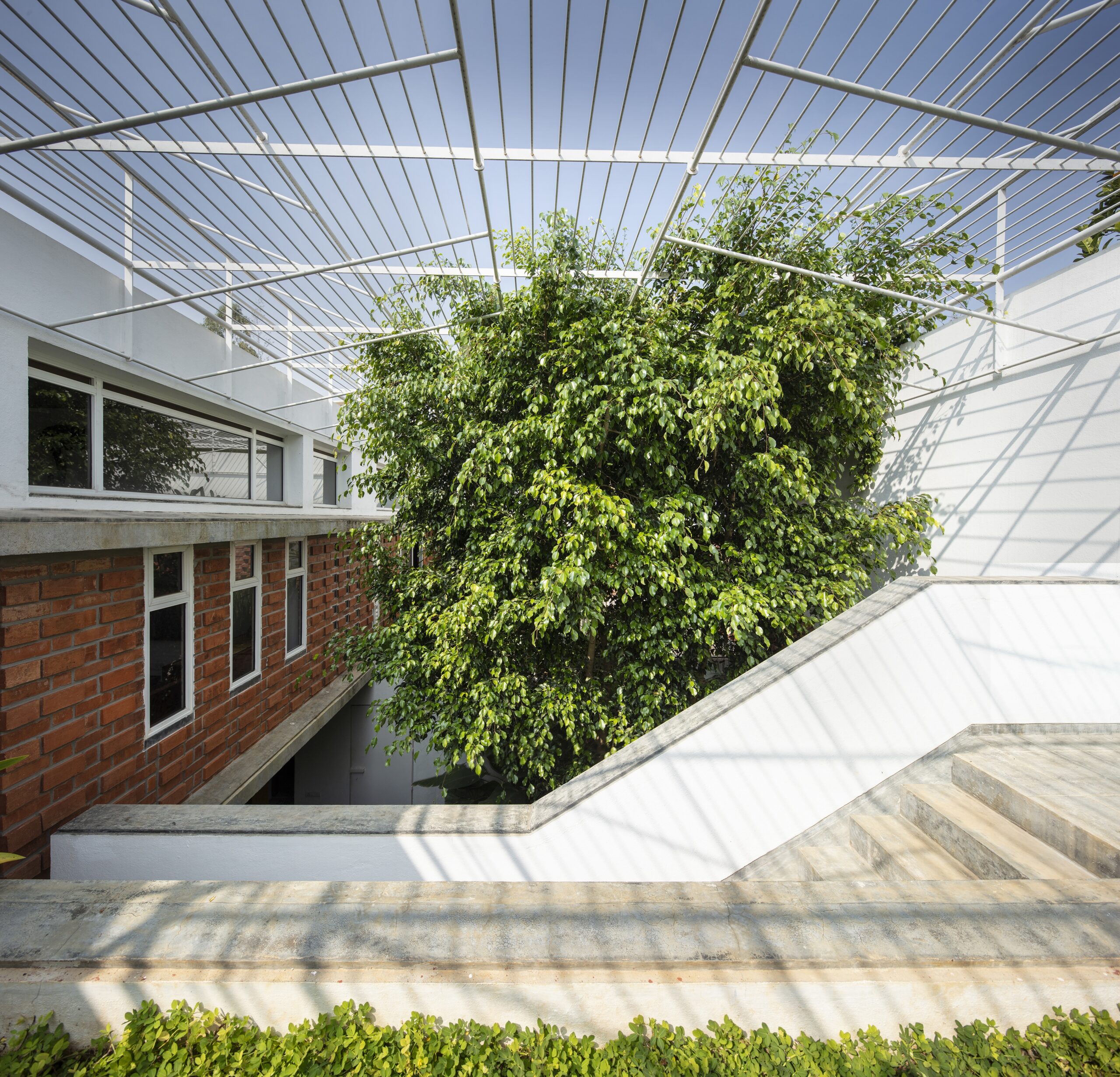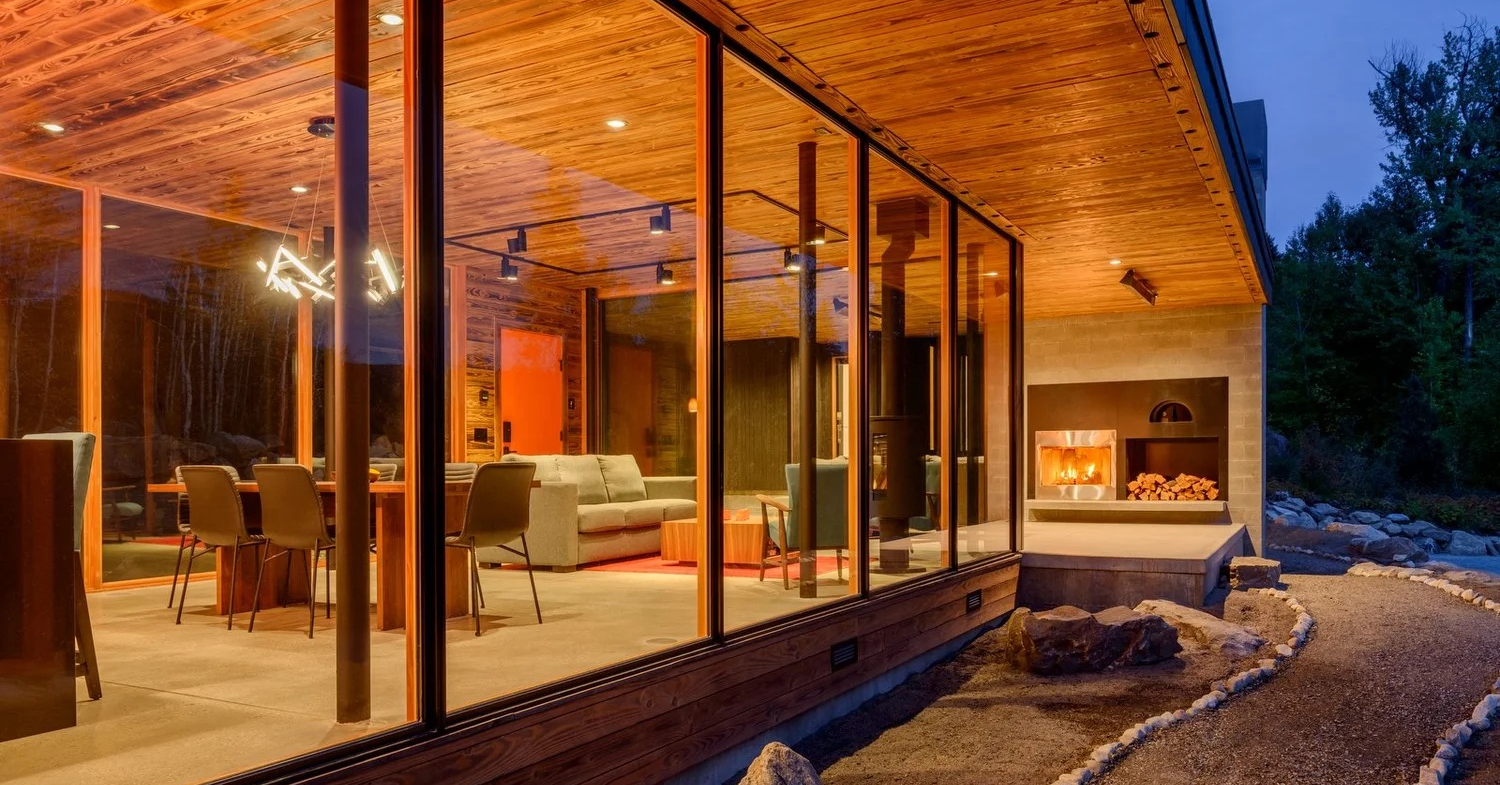The Last of Us: What Can Architects Learn From the End of the World?
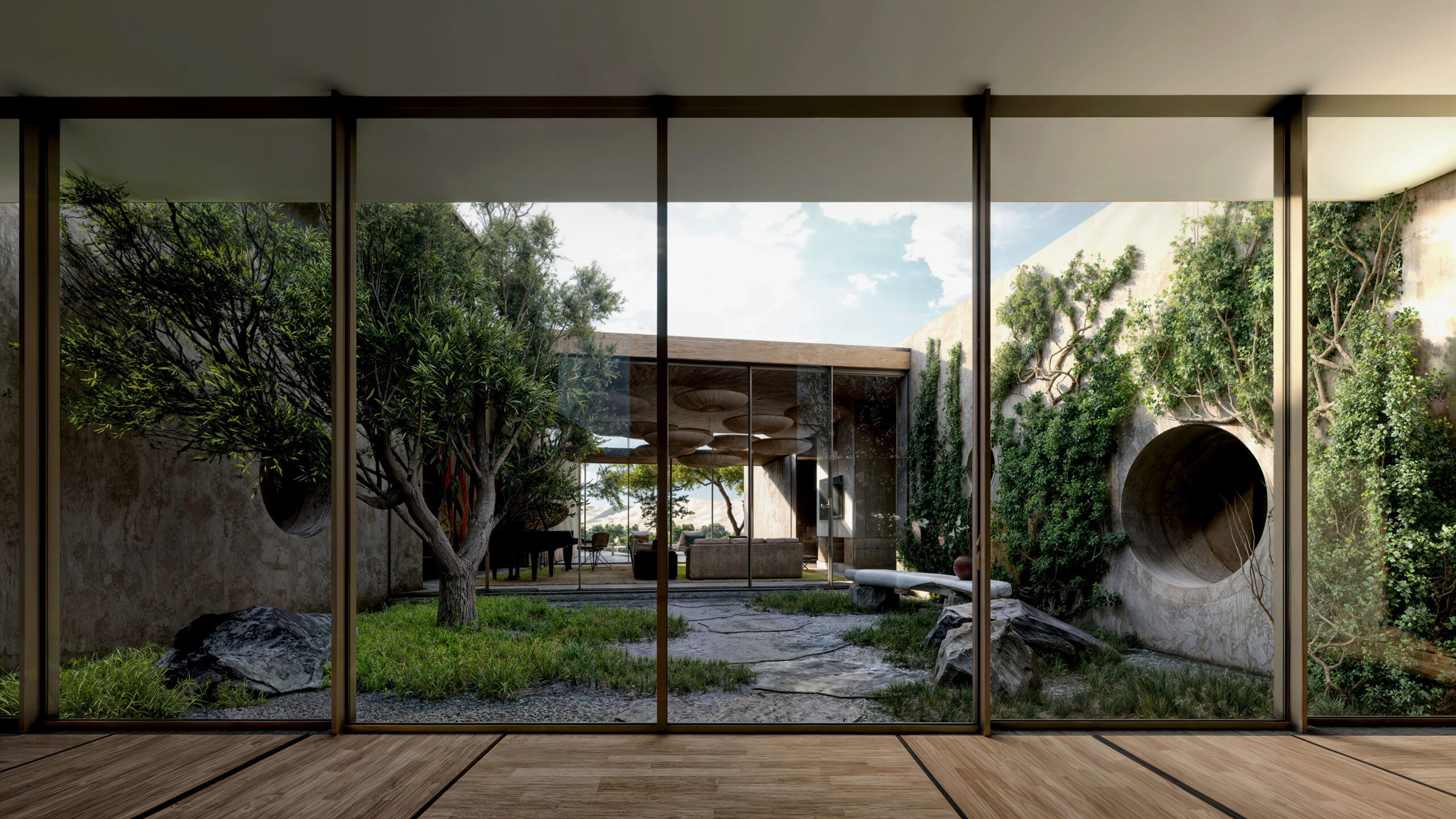
The winners of the 13th Architizer A+Awards have been announced! Looking ahead to next season? Stay up to date by subscribing to our A+Awards Newsletter.
In the grand scheme of post-apocalyptic narrative vehicles, one has towered above the rest since it first presented the beauty of dystopia to audiences in 2013. Or, more accurately, gamers.
If you’re unfamiliar with the cultural juggernaut that is The Last of Us, then we implore you to explore every inch of its universe. But tread carefully — the scene is set in a world ravaged by a pandemic, with 60% of the human population devastated, the infected running wild and the only hope of saving our kind hiding at the bottom of a landmark plot twist-cum-ethical dilemma.
The first game regularly ranks as one of the greatest playable titles of all time, while the sequel picked up over 320 Game of the Year Awards when it landed in June 2020. The second installment’s timing could not have been more coincidentally perfect, given most of us were desperately looking for anything to do amid widespread international lockdowns, curfews, work-from-home orders and travel bans at the height of Covid-19. Art imitating life, albeit with some significant license applied.
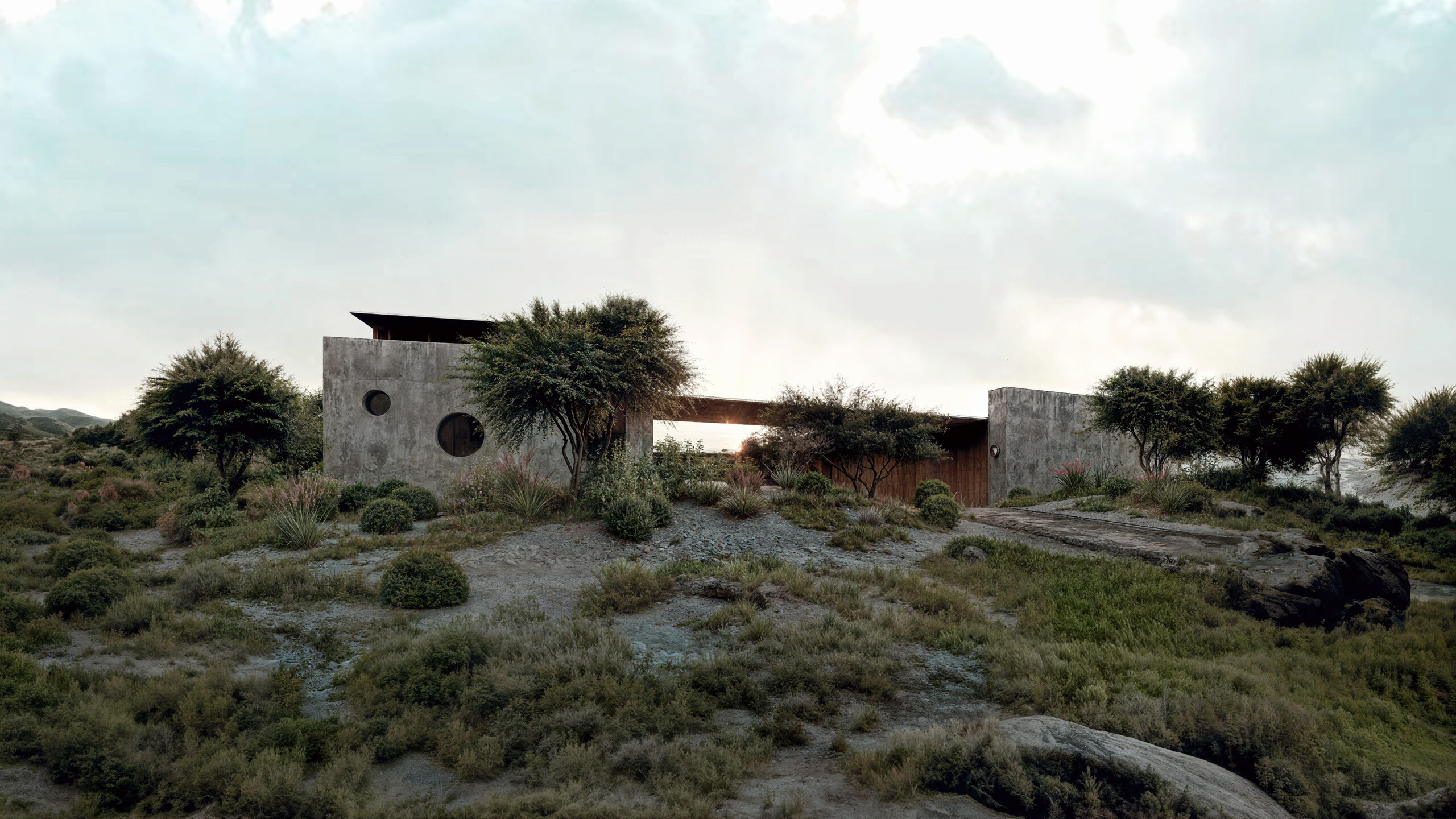
Nakaniwa by Daniel Joseph Chenin Ltd., Concept for Las Vegas, Nevada
If video games aren’t your thing, then The Last of Us TV series might be a better place to begin. Legitimized in the eyes of skeptics thanks to HBO’s enviable reputation for drama, the plot takes its own specific twists and turns, but the scenario is the same. As are the aesthetics, which contrast the horrors of disease, death and destruction by presenting a world which is in the process of rebalancing in favor of nature. As one BBC Culture article suggested, the franchise belongs to an obvious set of media titles that imagine the end of our world as the rebirth of another that time almost forgotten. And, existential fear of contracting a deadly virus aside, the view is truly serene.
But what if we don’t bother waiting around for the annihilation of our way of life and vast swathes of our brethren? Although still only a concept, Daniel Joseph Chenin’s Nakaniwa project can be read as architects embracing the idea of lush end times. Jury Winner at the 13th Architizer A+ Awards in the Unbuilt Residential category, this private house keeps a purposefully low profile to blend into rugged desert tundra. The concrete façade complements the dry greys of nearby rocks and ground underfoot, with minimal exterior details nodding to a protective bunker or bug-out getaway.
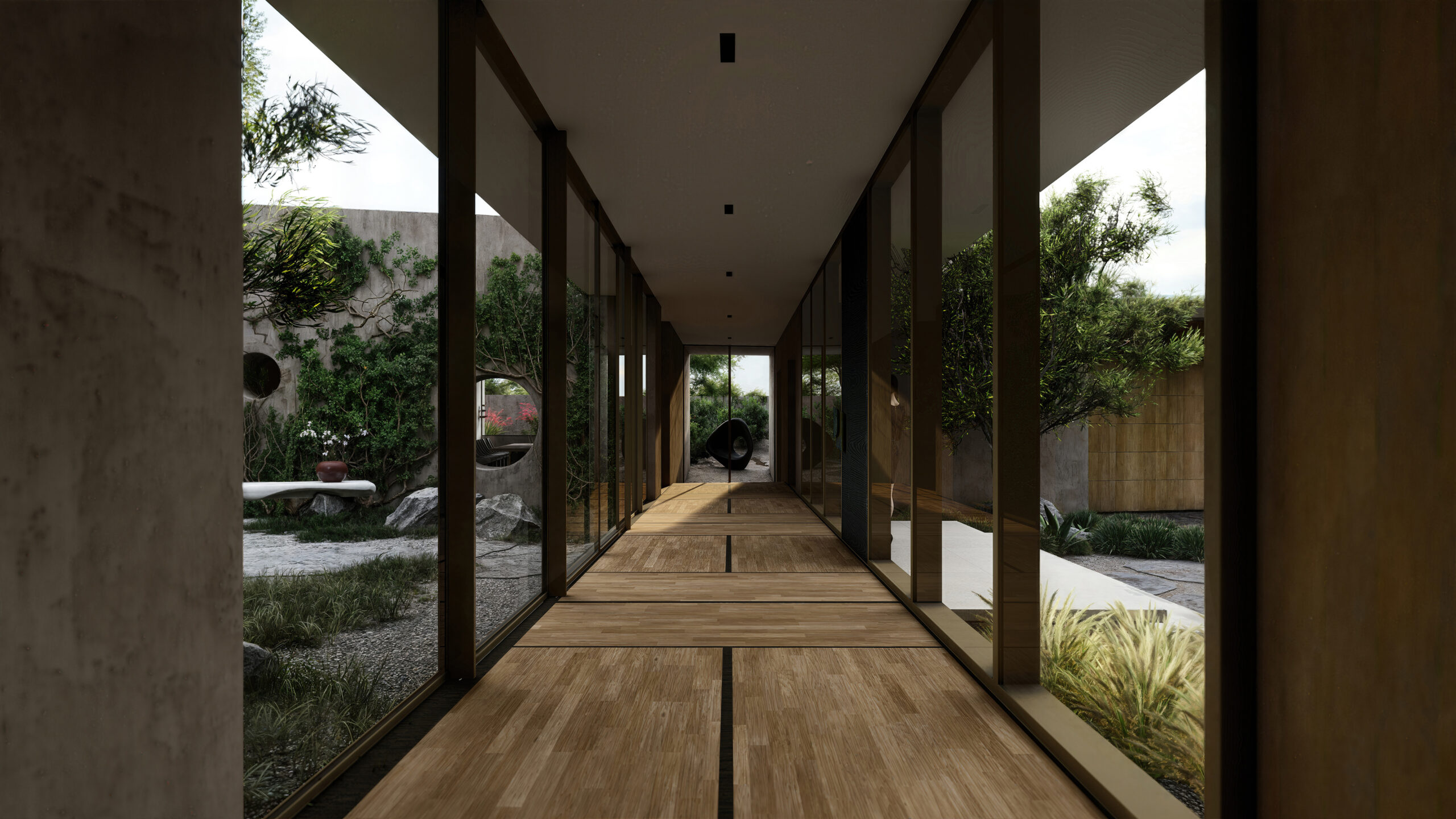

Nakaniwa by Daniel Joseph Chenin Ltd., Concept for Las Vegas, Nevada
More importantly, though, nature is invited into the blueprint itself. And in such a way that suggests reclamation rather than the hyper-controlled attitude built environment greening is often beholden to. One look at the inner garden and you could be forgiven for thinking the trailing foliage hanging from the first floor terrace has found its own way there, while two walls of floor-to-ceiling windows encasing the entrance give the illusion of trees bursting through the ground, finding their own way towards a light source, regardless of what this does to the structure that was there.
This inversion of the usual “bring the outside in” trope is what makes Nakaniwa stand apart. The foliage appears to encroach, rather than be curated, its presence suggesting a balance between architectural intention and organic autonomy. It’s an idea that resonates in a world already grappling with climate change and biodiversity loss: a home that becomes not just a refuge for people, but also a framework through which the environment itself is given space to thrive.
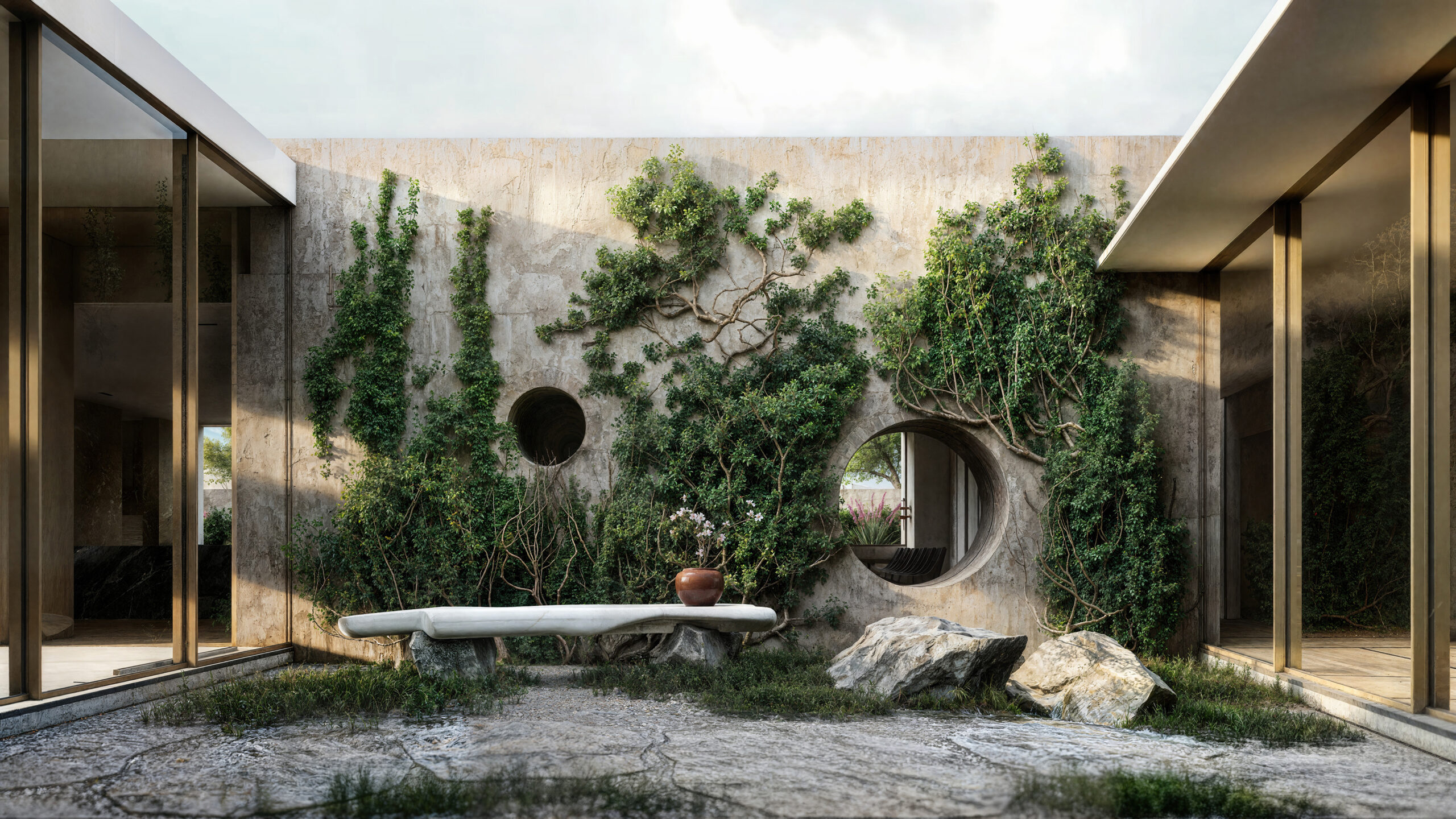
Nakaniwa by Daniel Joseph Chenin Ltd., Concept for Las Vegas, Nevada
The design articulates this philosophy through its spatial and material strategies. Two non-parallel wings converge around the courtyard, which functions as both a circulation core and a passive cooling device. Overhangs provide solar shading, filtering light deep into interiors while reducing heat gain. The palette of concrete, metal and glass mirrors the tones of the surrounding rocks and sand, allowing the home to all but disappear into its environment.
Inside, restraint gives way to richness. Bold colors, curated artworks and layered textures reflect the homeowner’s global travels, contrasting with the minimalist exterior to create a space that feels simultaneously intimate and worldly. Operable windows and skylights establish constant cross-ventilation, ensuring the desert’s shifting moods are felt rather than excluded.
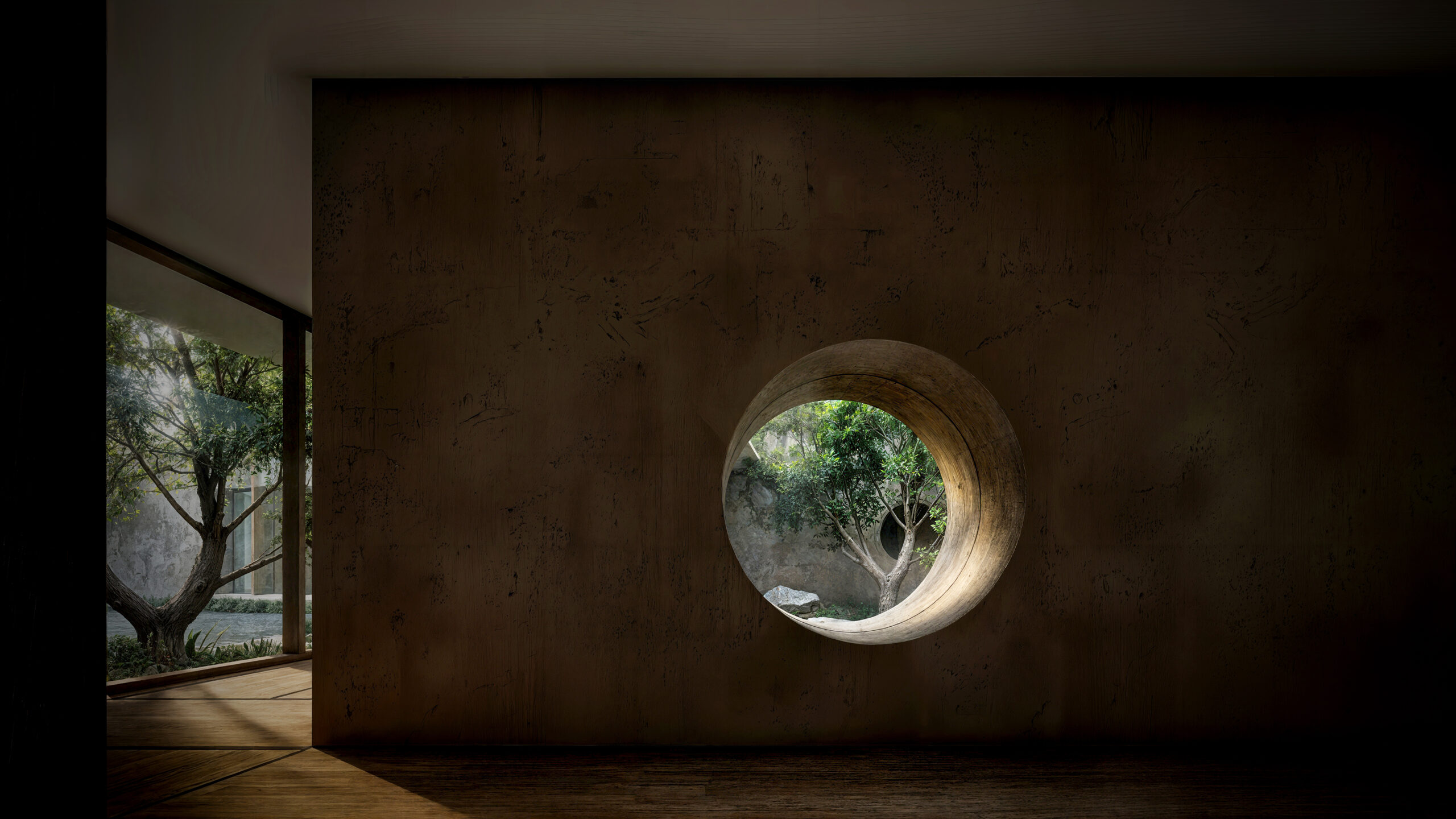
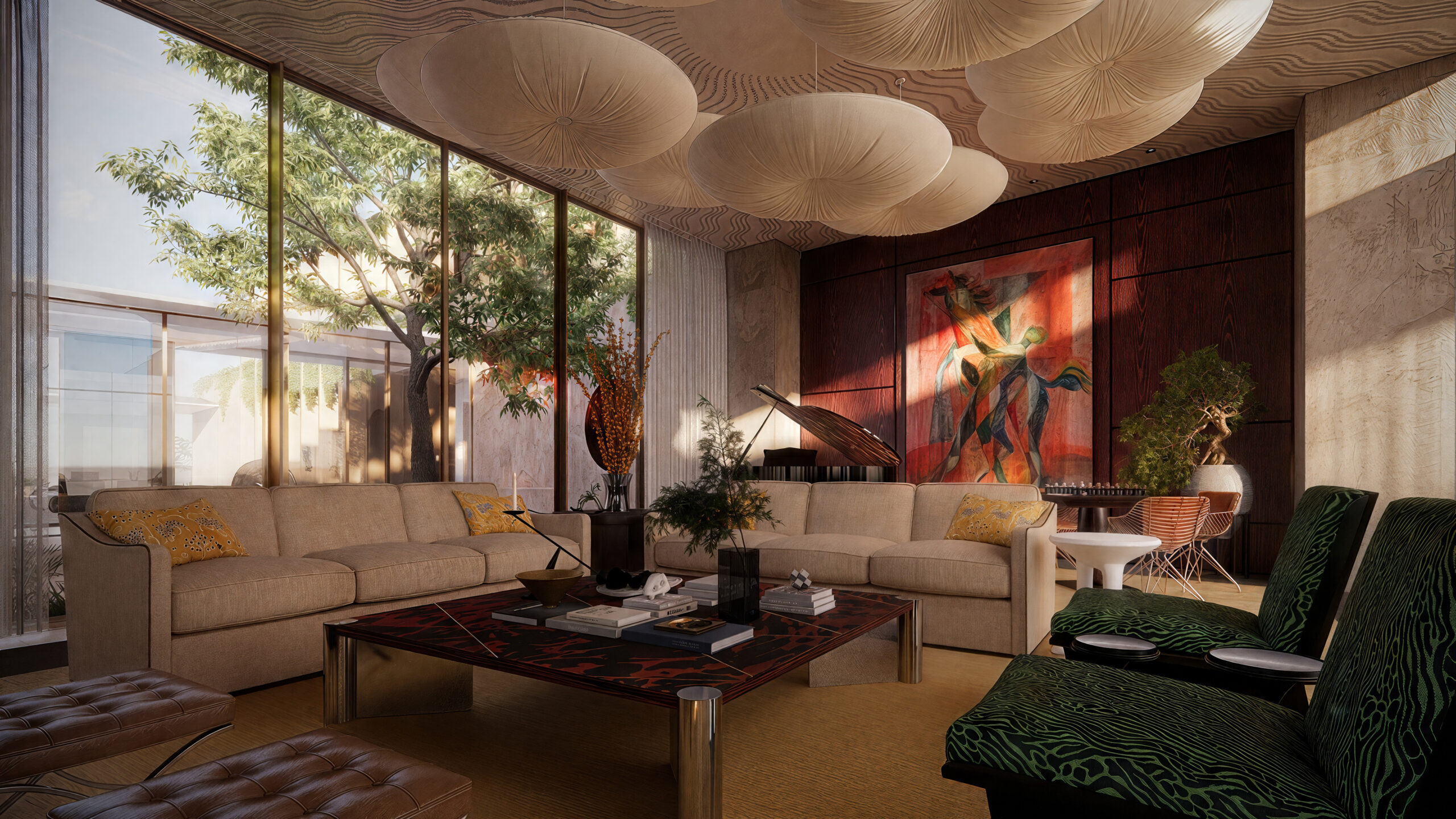
Nakaniwa by Daniel Joseph Chenin Ltd., Concept for Las Vegas, Nevada
There’s something inherently compelling about apocalyptic visions in which nature has taken back what most of our species has gradually been stealing from her over the course of several centuries. Partly, this could be due to a subconscious sense that civilization is losing touch with the planet and we need contact with Mother Earth for mental health, physical vitality, and all-around well-being.
It could also be due to Chernobyl: the site of the world’s worst nuclear disaster, an armageddon storyline in its own right, has shown what happens in just a few decades when humans leave well alone. Even with such high levels of residual radiation. The point being, we already know there’s a reasonable chance the real post-apocalyptic future will be greener than the likes of Mad Max have dared to dream.
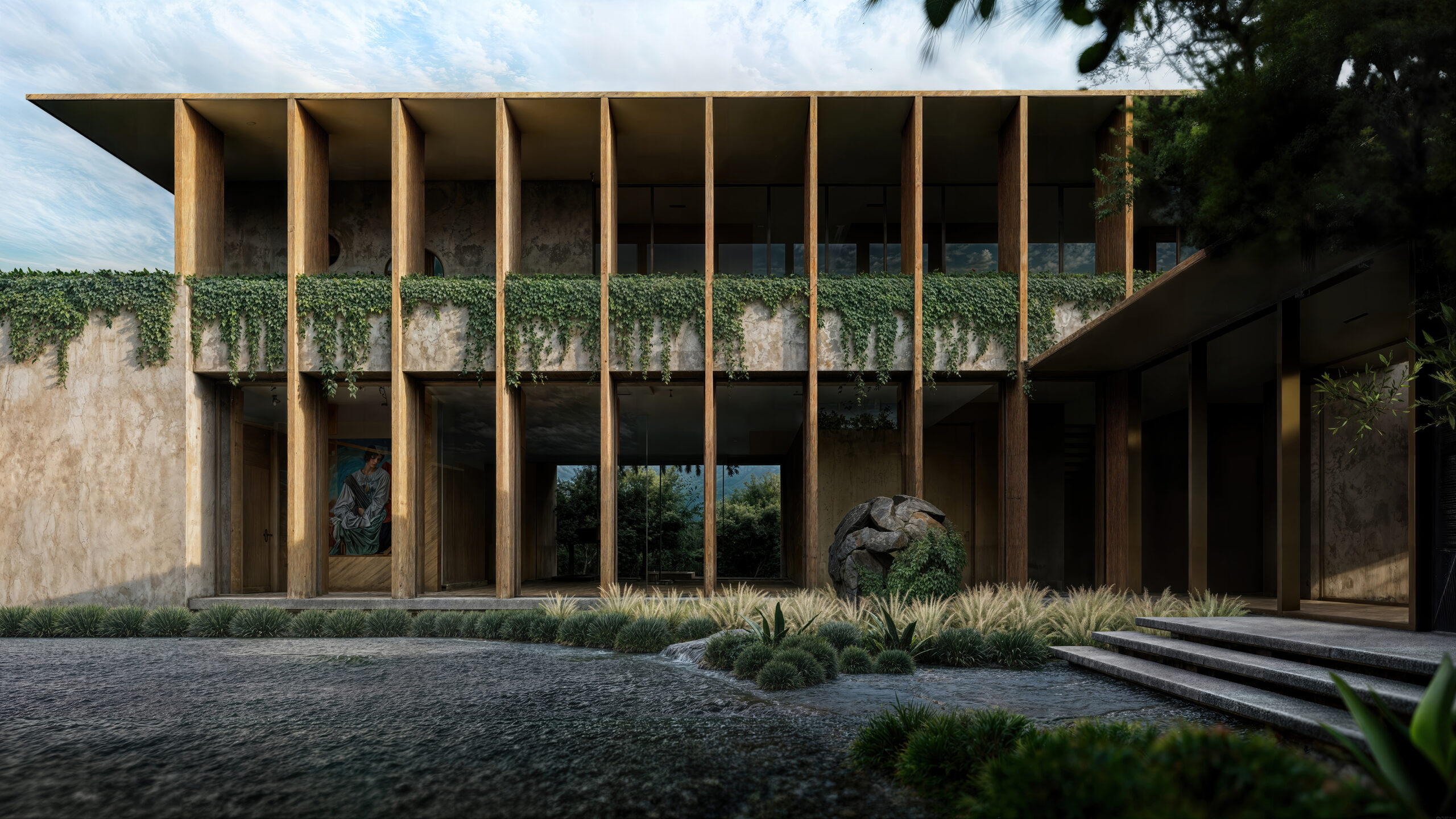
Nakaniwa by Daniel Joseph Chenin Ltd., Concept for Las Vegas, Nevada
“Bringing the outside inside” is certainly nothing new, but it rarely looks so instinctive. So while we could harp on about the proposed climate-aligned credentials of Nakaniwa — carbon-reduced concrete, passive cooling systems, photovoltaic energy production, the absence of harmful volatile organic compounds — this may not be the real trophy piece of Chenin’s concept. Instead, given the environmental challenges we currently face, it might be most pertinent to focus on the way this idea recognizes a fundamental need to strike a balance between all end users of a development. And by that, we mean human, animal, and flora.
Acknowledging this counts for more than making one-off stunners like Nakaniwa standout amongst the noise. If we follow this rule through all developments, it creates new expectations for what we want and demand from our buildings. And that starts at the design stage. Those responsible for proposing how new homes, offices, and public realms should look, feel and function have sleepwalked into a new responsibility. In the face of rapidly plummeting biodiversity and shrinking expanses of land which remain untouched by humanity, it’s time for architects to embrace their role as environmental stewards.
The winners of the 13th Architizer A+Awards have been announced! Looking ahead to next season? Stay up to date by subscribing to our A+Awards Newsletter.
The post The Last of Us: What Can Architects Learn From the End of the World? appeared first on Journal.





















